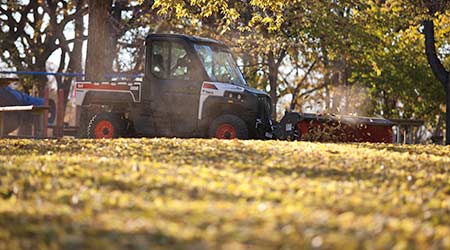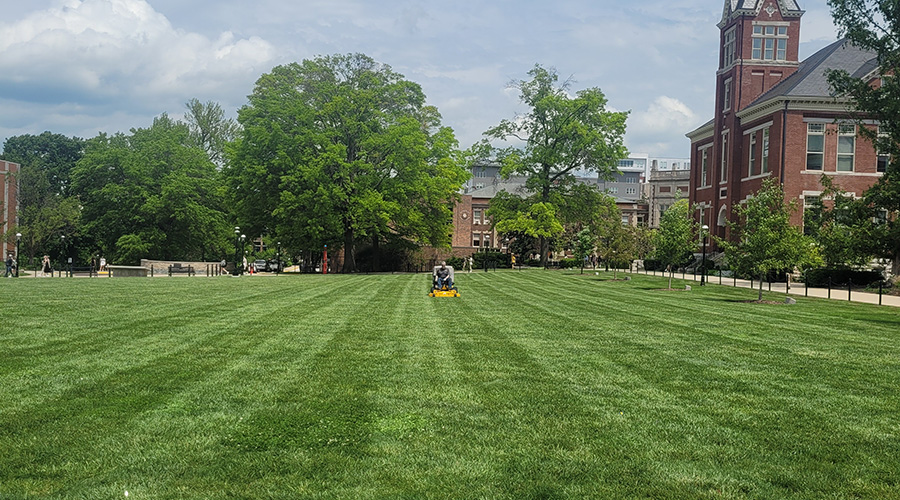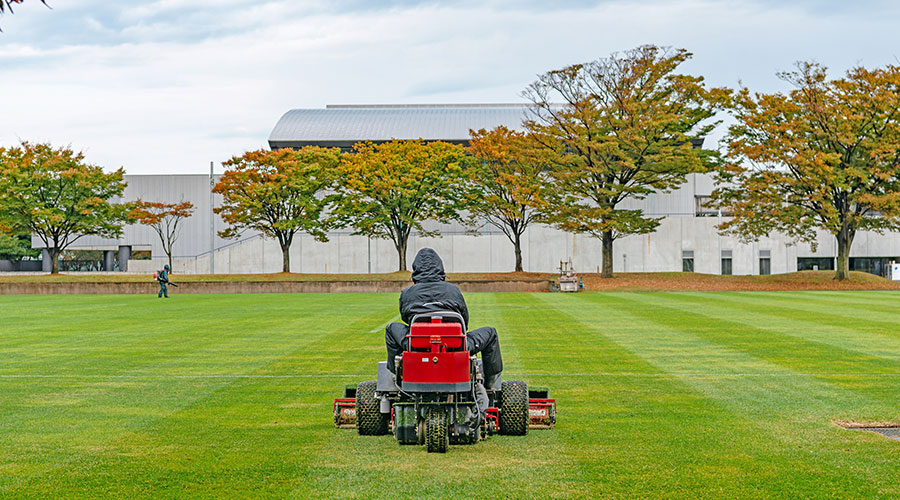 The popularity of utility vehicles has inspired manufacturers to innovate their products with the additional strength, durability and versatility needed to meet growing customer demands.
The popularity of utility vehicles has inspired manufacturers to innovate their products with the additional strength, durability and versatility needed to meet growing customer demands.Maximizing the Investment of Utility Vehicles
By understanding equipment options and department needs, managers can select vehicles that deliver productivity and performance
For years, utility vehicles were associated more with outdoor recreation than with work. In the last decade, though, grounds managers in institutional and commercial facilities have started recognizing the real contribution these workhorses can make to increasing production, improving operations and creating a better work environment for grounds maintenance crews.
This increased attention and use has inspired manufacturers to innovate utility vehicles with the strength, durability and capabilities that enable them to meet the demands of grounds managers and their staffs.
Understanding options
Before discussing whether a utility vehicle is right for a particular facility’s needs and, if so, steps managers can take to make the most appropriate choice in machines and attachments, the first step is to understand the difference between utility vehicles and all-terrain vehicles (ATVs).
An ATV — commonly called a quad or a four-wheeler — is a smaller, single-rider vehicle with handlebars. The operator straddles the seat and rides it like a motorcycle, so it requires balance and extra physical effort to operate.
ATVs are popular among off-road sports and racing enthusiasts, small game hunters and farmers, but most models have a limited weight capacity, and they are not designed for heavy towing or for hauling a large load of gear and passengers. An ATV can be useful if operators need to traverse a great deal of acreage or frequently pass through tighter gates and pathways. A utility vehicle — also known as a side-by-side — differs from an ATV in important ways. Utility vehicles are built more for safety and include standard features such as a roll cage and seat belts.
They are also built for work and performance, with four-wheel drive, heavier load and towing capabilities, and options such as cargo beds that can convert to flatbeds and passenger seats that can fold down to create a longer bed when needed. Some models feature a hydraulic dump-assist function for moving mulch, dirt and gravel.
When it comes to cost, either piece of equipment is a substantial investment, although ATVs are usually more affordable. Of course, much like buying a new car or truck, managers can spend a great deal of money on extra options, so it is important to identify the department’s goals and needs to determine which direction to take before making the commitment.
Related Topics:















